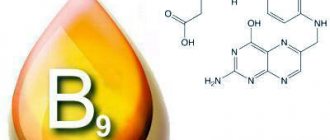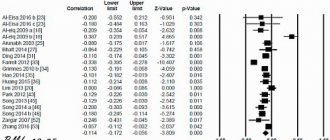Required standards
The content of the article
During monthly menstruation and during pregnancy, the female body loses iron, which means it is necessary to restore its normal level.
The required amount of iron per day is approximately 18 mg. However, in fact, only 10% of the required amount comes with regular nutrition. This is due to the fact that some products are not a source of the element, and some products completely block the absorption of iron.
The group of blockers includes:
- dairy products;
- Tea coffee;
- soybeans, corn, eggs.
Sources of iron
The human body can only absorb divalent iron. When consuming ferric iron, it needs to undergo a series of biochemical transformations with the participation of vitamin C, due to which it is transformed into divalent iron. But in any case, of all the iron that enters the body, only 10% is absorbed.
In general, there are 2 types of iron:
- Heme, presented in the form of hemoglobin. It is found in meat, fish, seafood, and in maximum quantities in the liver and kidneys. This iron is highly absorbable.
- Non-heme. Its sources are plant foods, in particular legumes, nuts, mushrooms, oatmeal, seaweed, dried fruits, and whole grains. But the quality of absorption of this type of iron is much lower than that of heme iron.
Vitamins C and B12, as well as pepsin and copper, increase the quality of iron absorption, especially when they enter the body from animal sources. On the contrary, foods rich in calcium, tannin, vitamin E, zinc and phosphates inhibit this process. These include dairy products, cheeses, tea, coffee, red wine, cocoa and some carbonated drinks. Foods rich in phytin and dietary fiber also reduce the quality of iron absorption in the intestines. They are able to retain iron and remove it from the body along with feces. At the same time, in refined and pre-processed foods, iron binds with other substances, which leads to the formation of poorly soluble iron compounds that are practically unable to be absorbed.
A number of medications also interfere with the absorption of iron, including tetracycline antibiotics, calcium salts, and antacids.
All this becomes the reason that in the modern world it is becoming quite difficult to get enough iron from food for the normal functioning of the body, especially for people who need it in large doses - pregnant women, children. This makes it necessary to obtain it in other ways, one of which is the use of special medications and dietary supplements.
The daily requirement for iron depends on gender and age. At the same time, pregnant women need to receive almost twice as much iron daily.
Signs of iron deficiency
At the very beginning of iron deficiency, it is difficult to guess the problem - the symptoms are weak or absent. After some time, the situation becomes worse, it is noticeable that something is wrong with your health.
A number of symptoms appear:
- dizziness;
- bad feeling;
- lethargy;
- dryness and flaking of the skin;
- depletion of nails.
Due to a large iron deficiency, tinnitus may be bothersome.
In women, the condition of the hair usually immediately deteriorates and begins to fall out. If you feel that something is wrong, be sure to go to an appointment with a gynecologist, or even better, get checked regularly so as not to trigger the problem.
Iron deficiency
Causes of iron deficiency
There are two main reasons for this disorder: insufficient supply of the element and its excessively rapid, uncompensated elimination.
Factors of insufficient intake include:
- poor nutrition, consumption of foods containing inadequate amounts of Fe;
- general malnutrition;
- diseases of the gastrointestinal tract (for example, gastritis with low acidity, dysbacteriosis);
- disruption of iron transport;
- the use of various complexes that interfere with the absorption of iron;
- helminthic infestations;
- hormonal disorders (thyroid dysfunction);
- excessive intake of calcium, zinc, phosphates, oxalates into the body;
- violation of vitamin C metabolism;
- lead poisoning.
Factors associated with excessively rapid elimination include:
- physiological increased consumption of Fe during periods of intensive growth and development, pregnancy and lactation;
- significant blood loss during operations, heavy menstruation, etc.
Consequences of iron deficiency
Due to the fact that the main part (up to 80%) of this element is necessary for the production of hemoglobin, the main form of manifestation of its deficiency is iron deficiency anemia, which is characterized by the following symptoms:
- decrease in hemoglobin concentration in the blood;
- perversion of taste and smell (for example, craving for eating non-food substances);
- headache, dizziness, weakness, fatigue;
- decreased concentration and memory impairment;
- slow development in children;
- suppression of the immune system and, accordingly, an increase in general morbidity (deficiency of vital elements, including iron, reduces the body’s resistance to colds and infectious diseases, pustular skin lesions, enteropathy, etc.);
- tachycardia with slight physical exertion;
- cold intolerance;
- fragility, thinning, deformation of nails;
- constipation
How to replenish iron deficiency
To restore your iron norm, you need to understand why you lack it. Therefore, first you should seek help from a doctor and find out the reason. If a woman is over 50 years old, then this is especially important, since during this period hormonal changes in the body occur with the loss of a significant amount of micro- and macroelements.
It is also important to be tested for anemia during pregnancy. Pregnant women retain more iron than other women, but the need for it is much greater.
You cannot make decisions about taking iron supplements on your own. Such medications are purchased only as prescribed by a doctor.
In addition to taking medications, you need to eat right. A balanced diet is one of the main elements for your health. To avoid problems with iron deficiency, you should not neglect foods that contain it.
Symptoms of deficiency and deficiency
Lack of iron, especially iron deficiency anemia, has an extremely negative effect on the condition of the body. This is primarily due to impaired oxygen supply to cells. Therefore, against the background of iron deficiency, constant fatigue is primarily observed. In such situations, even a full sleep is not able to provide the necessary energy.
Subsequently, a lack of iron in the body leads to decreased immunity and metabolic disorders, which leads to an increase in cholesterol concentrations, excess weight and other undesirable consequences. Also, a consequence of iron deficiency anemia is increased vulnerability of the skin and mucous membranes, including the gastrointestinal tract. Therefore, against the background of iron deficiency, dermatological diseases often occur, in particular eczema, dermatitis, as well as gastrointestinal pathologies, including gastritis, peptic ulcers, etc. There is often a worsening of existing cardiovascular diseases and dementia.
Iron deficiency is especially dangerous for children, as it leads to retarded growth and mental development of the child. In schoolchildren, this may be accompanied by a decrease in the ability to concentrate, rapid fatigue and, as a result, a lag behind the school curriculum.
Lack of this microelement is no less dangerous for pregnant women. During this period of a woman’s life, the volume of plasma and red blood cells increases against the backdrop of the need to meet the needs of the growing fetus. Iron deficiency sharply increases the risk of maternal and infant death, premature birth and low birth weight babies.
Symptoms of iron deficiency in the body may include:
- weakness, lethargy, increased fatigue, poor tolerance to physical activity;
- increased incidence of infectious diseases;
- increased irritability, tearfulness;
- decreased blood pressure, which leads to dizziness and headaches;
- brittle nails, hair loss up to alopecia;
- perversion of taste as a result of atrophy of the papillae of the tongue with the emergence of a desire to eat earth, clay, ice, paper, starch;
- restless legs syndrome, accompanied by discomfort in the legs in the absence of movement, shuddering during sleep;
- pallor, dry skin, blueness of lips, whites of eyes;
- decreased appetite;
- decreased muscle tone, the appearance of shortness of breath after minor physical activity, etc.
With iron deficiency in the body, the likelihood of developing intestinal infections and all kinds of acute respiratory infections increases by 1.5-2 times.
Diseases and conditions causing iron deficiency
The main factors influencing iron deficiency in the female body:
- uterine bleeding;
- stomach diseases;
- renal failure;
- tumor in the digestive system;
- fasting on various diets;
- vegetarianism;
- menopause, which causes a slowdown in metabolic processes.
Of course, it will be difficult to restore your normal level with the help of products alone. But you can’t start taking something without examination. First, go to the doctor, take all the necessary tests for hemoglobin, and only after that, the gynecologist should prescribe you something that suits your body.
Excess iron in the body
Excess iron is not as common as iron deficiency and causes great harm to health.
A number of diseases can be complicated by excess iron:
- oncological processes are accelerated;
- iron deposition occurs in cells and organs;
- skin pigmentation increases;
- chronic diseases and pathologies develop.
To avoid such problems, you need to conduct a medical examination at least once every six months. With a healthy, active lifestyle and with properly prescribed medications, problems with iron deficiency or excess should not arise.
If you already have a problem, don’t delay going to the doctor, otherwise it will only get worse. First, you should contact a gynecologist who will examine, listen and prescribe the necessary tests. Based on the results of a blood test, the doctor will determine the level of hemoglobin, that is, an iron-containing blood protein of complex structure. A competent examination will help identify and eliminate the causes of the problem.
ONLINE REGISTRATION at the DIANA clinic
You can sign up by calling the toll-free phone number 8-800-707-15-60 or filling out the contact form. In this case, we will contact you ourselves.
If you find an error, please select a piece of text and press Ctrl+Enter
Excess iron
Excess iron in the body is quite rare, most often it happens in people suffering from hemochromatosis. The frequency of this disease in the population is approximately 0.3%.
Causes of excess iron
- Excessive intake: multiple blood transfusions, consumption of foods excessively fortified with iron (for example, long-term consumption of alcoholic beverages made in iron vats, or increased levels in drinking water)
- diseases of the liver and spleen (the ability to store some iron in reserve is impaired)
- various disorders of iron metabolism regulation
Consequences of excess iron
- siderosis (iron deposition in tissues and organs)
- headaches, dizziness, increased fatigue, weakness
- skin hyperpigmentation
- various dyspeptic symptoms (heartburn, nausea, vomiting, stomach pain, constipation, diarrhea, etc.)
- suppression of cellular and humoral immunity and increased risk of developing various diseases
- liver failure, liver fibrosis
- weight loss











